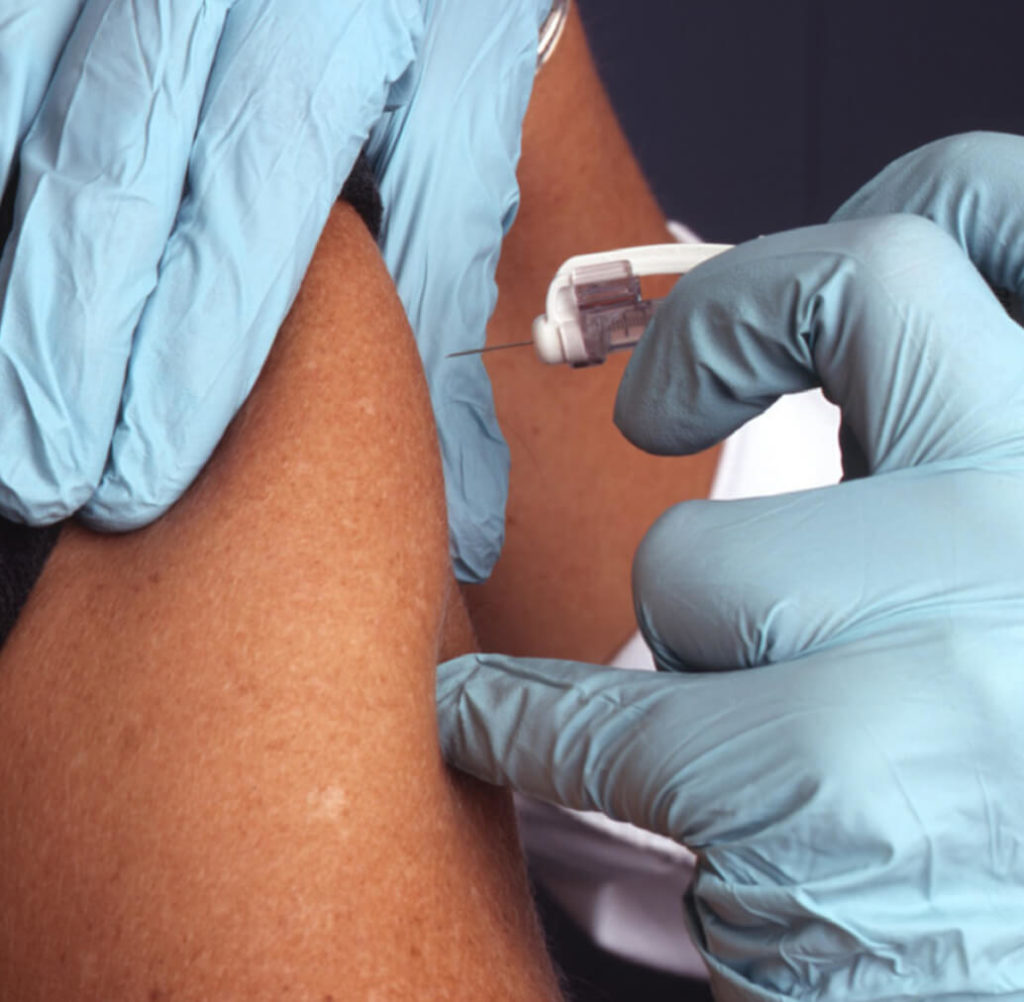The First Malaria Vaccine is Here. Let’s Meet the Moment
The First Malaria Vaccine is Here. Let’s Meet the Moment
By Marian W. Wentworth and Thomas Hall
This article was originally published in STAT.

One child dies every two minutes from malaria. Wider use of a new vaccine can make a dent in that devastating statistic.
The World Health Organization recommends the vaccine for broad use in sub-Saharan Africa and other areas with moderate to high malaria transmission, after years of studies in some 900,000 children showed it to be safe and effective.
But despite this widely hailed breakthrough, the malaria vaccine hasn’t been met with the enthusiasm we think it deserves. Some big players, like the Bill and Melinda Gates Foundation and the Global Fund — donors we admire and partner with on several projects — have lamented the vaccine’s relatively low reduction in severe malaria when used alone and say it costs too much, despite the clear cost-benefits and efficacy synergies the WHO demonstrated when piloting the vaccine in real-world contexts.
Other concerns include the logistical challenges in distributing the vaccine and the potential availability of more effective treatments in the future.
To be sure, promising treatments using monoclonal antibodies and an mRNA vaccine are under investigation. And early results on another experimental vaccine report higher efficacy than seen in earlier vaccines. But experimental vaccines have not been studied in the thousands of people required to establish a vaccine is safe and effective over the longer term.
The malaria vaccine now in hand could save millions of lives in just a few years, and there is no time to wait.
Progress in the fight against malaria has stalled in recent years, and was then knocked off track by the pandemic. The world saw a 40% decline in malaria mortality from 2000 to 2015, and then mortality held steady for several years. But in 2020, deaths rose 12%, largely due to Covid-19-related disruptions.
Gavi, an alliance of countries and private funders working to boost global immunization, has pledged a $155.7 million investment via grants and other support to introduce the vaccine in Ghana, Malawi, and Kenya.
As public health practitioners in malaria prevention and control — now working to save mothers and children from this devastating disease in several countries — we can’t fathom hesitating in embracing this groundbreaking tool now.
Not just numbers
One objection to the vaccine, known as RTS,S, is its relative cost. The WHO estimates the average price to be $5 per dose, while existing interventions like insecticide-treated bed nets average about $1 each.
Yet the WHO found the vaccine to be overall highly cost effective, comparable to other new vaccines and malaria treatments, with no negative effect on the uptake of other preventive measures, such as insecticide-treated bed nets. A related hesitation is that the vaccine’s efficacy against severe malaria when used alone hovers around 30% in large trials. But taming the parasite that causes malaria — with thousands more genes than a virus — requires a multi-pronged plan of attack.
For example, when coupled with seasonal malaria chemoprevention (an antimalaria medicine given intensively at times of high transmission), the vaccine has been found to be 60% effective. The combination substantially lowered the incidence of severe malaria and death from malaria than either intervention alone. It’s further proof that a variety of approaches can have a bigger impact when used in tandem.
And making the vaccine available as an option in addition to bed nets and seasonal malaria chemoprevention resulted in more than 90% of children under five having access to at least one of these tools.
These percentages aren’t just numbers on a page. They can translate to tens of thousands of lives saved.
What’s more, the additional public health impact of the vaccine on top of existing interventions is estimated at 200 to 700 deaths averted per 100,000 children vaccinated. The cost per life saved is comparable to other new vaccines.
What would that look like in real life?
Nigeria, Africa’s most populous nation, is home to an estimated 31 million children under age five. In 2020, more than 130,000 children in this age group perished due to malaria.
Using the lower-end value of 200 lives saved per 100,000 children vaccinated, that could translate into about 62,000 lives saved in just one year in Nigeria alone. These are children who will be alive, loved by their families, and hopefully able to enjoy bright and productive futures.
Lessons for the future
Another caution with the vaccine is the logistical complexity in distribution.
It is true that the vaccine requires four doses, more than many other childhood vaccines. That said, current seasonal malaria chemoprevention campaigns require three daily visits for four months, a similarly logistically challenging task that many countries in line for the malaria vaccine have mastered.
National scale-up of once-novel malaria interventions has historically led to a better understanding of their effectiveness and has yielded important lessons in operationalization. When insecticide-treated bed nets were being promoted for scale-up throughout Africa, for example, some doubted they could be made available for every person and feared potentially budget-busting costs. But once the effort began, approaches to reach isolated communities in cost-efficient ways were identified and coverage rates rose significantly, reaching previously unprotected people, including children under five. These campaigns have saved millions of lives.
Malaria’s ability to trick the human immune response and its sophisticated life cycle make it a wily adversary, turning the effort to combat it into a decades-long quest.
Vaccines have done amazing things for many of the world’s toughest health challenges, sometimes even creating the opportunity to eradicate a disease. But waiting for the perfect, 100% effective, one-dose, lifetime vaccine means waiting for years — and millions more kids will die. It’s time to use the full arsenal of tools to protect them.